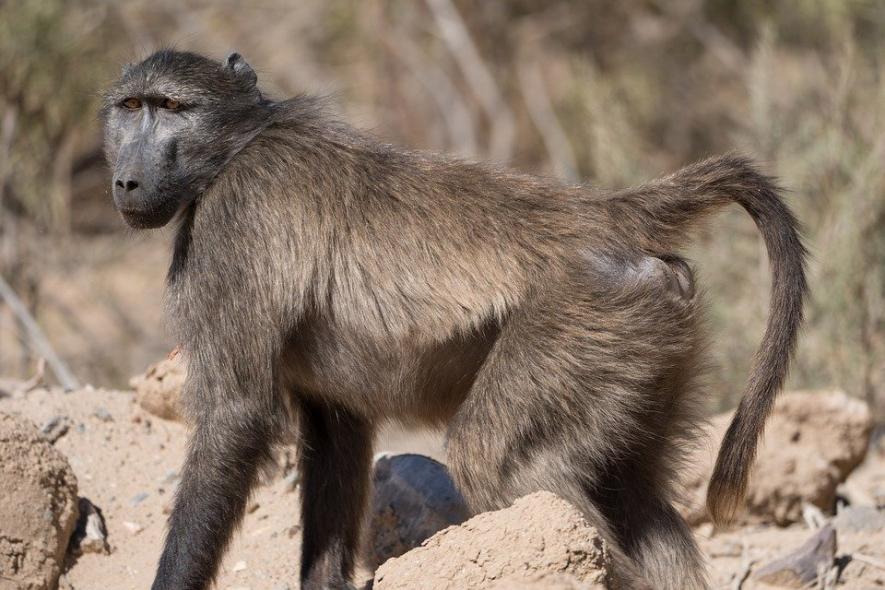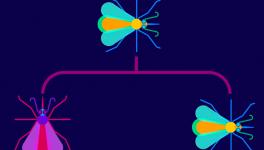Humans Lost Tails due to ‘Jumping Genes’: Study

Image Courtesy: Pixabay
All mammals, except humans and the great apes, like chimpanzees, gorillas, orangutans and gibbons, have tails. Why? A new study published in the preprint server bioRXiv suggests that a small piece of DNA that jumped into a new place in the chromosome changed how great apes make a key developmental protein and could be the factor behind losing of tails.
The study also suggests that the genetic change also came with another repercussion, a less visible one—a higher risk of birth defects, especially in the developing spinal cord.
The DNA molecule is wrapped tightly around some proteins. The DNA-protein complex is known as chromosome. It is the parts of the DNA molecule which possess the codes for producing proteins. The codes embedded in the DNA are specific for proteins, meaning one code is related to the production of a particular protein. The parts of the DNA that possess the coding for protein production are known as genes. Again, all of the genes in an organism are called the genome.
According to Hopi Hoekstra, an evolutionary biologist at Harvard University, the study reveals two important aspects: it not only addresses a very interesting question about how we have become humans but also provides insights into the evolutionary changes involved. “It is a beautiful work”, Hopi Hoekstra said in a statement.
Bo Xia, the leading author of the study and a graduate student at New York University’s Grossman School of Medicine, during his quest of why humans don’t have tails searched for ape-specific changes in genes in the available repositories of primate genomes. The genes that Bo searched for have roles in tail development. He found that a particular gene called TBXT can be a strong suspect. This gene was present in all great apes but absent in other primates.
The particular gene is a transposable element, or a jumping gene. The transposable elements are sequences of the DNA that can move from one place to another in the DNA. It is thought that the transposable elements are remnants of ancient viruses and are common in human genome. In fact, 10% of our DNA is made up of such transposable elements.
Sometimes, such a transposable element can interrupt a gene and prevent the production of a protein while the elements can show complex effects in other cases. These capabilities of the transposable elements have made them one of the key drivers of evolutionary changes.
The TBXT codes for the protein are called Brachyury, which means short tail in Greek. A closer search by Bo further revealed that there is a second transposable element nearby. The second element is present in monkeys as well as apes, but Bo hypothesised that the two transposable elements can stick together in apes forming a loop and disrupt TBXT expression, resulting in a protein that is shorter than the original one.
Going further, Bo and his colleagues found that human embryonic stem cells make two versions of the TBXT, one longer and the other one shorter. On the other hand, mouse cells produce only the longer form. The researchers now attempted to do experiments by removing one of the two transposable elements from human embryonic stem cells. They did it with the help of the gene cutter, widely applied in genetic and translational researches, the CRISPR. Removing one of the transposable elements resulted in disappearance of the shorter version of TBXT.
Using the CRISPR, the researchers made mice with a shortened version of the TBXT gene. The mice that had both the short and long version of the transposable elements were born with tails of varied lengths and some mice did not have a tail at all.
The results suggest that the shorter version of TBXT influences tail development. Itai Yanai, one of coauthors of the research paper, said, “Because the genetically altered mice had a mix of tail lengths, other genes must be working together to eliminate tail development in apes and humans. But the ape-specific Alu insertion Bo noticed was likely a critical event about 25 million years ago as great apes diverged from other simians.” Here, the Alu insertion refers to the transposable elements.
The researchers also observed that the genetically modified mice had high rate of problems regarding the development of the spinal cord. The birth defects of the genetically modified mice in the spinal cord and also in the brain and skull are fairly common to humans. In fact, one in every 1,000 newborns is prone to have these birth defects.
“We apparently paid a cost for the loss of the tail and we still feel the echoes. We must have had a clear benefit for losing the tail—whether it was improved locomotion or something else,” Yanai added. However, Hoekstra cautioned that the birth defects in mice could have a different source than the disorders seen in humans.
Get the latest reports & analysis with people's perspective on Protests, movements & deep analytical videos, discussions of the current affairs in your Telegram app. Subscribe to NewsClick's Telegram channel & get Real-Time updates on stories, as they get published on our website.
























